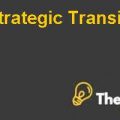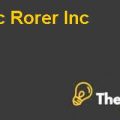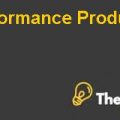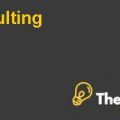
BACKGROUND
Thomas Stearns was facing the issue of meeting the deadline of the project. The $ 20 million project of Confined Aquatic Recovery vehicle had to be completed in the coming 10 months and by no means was Thomas Stearns certain that he could meet the deadline of the project within this time period. There were many considerable portions of the software which had to be still developed. Three options are available to Thomas Stearns to complete the project in a timely manner. These three alternatives were to focus on the development of the software, or to invest in the development of the hardware which would eliminate all the risks involved with this project and the final option was to re-evaluate the situation at the end of the five months. Each of these alternatives has its risks and relative benefits. The intangible costs related to the reputation of the company have also been considered so that the damage on the reputation could be avoided to limit the effect on the success of the business.
DISCUSSION
Descriptive decision trees have been used to analyze the situation for the different options. All the possible probabilities and the possible outcomes have been considered to evaluate each of the three options. The costs for each alternative given in the case with their respective probabilities have been used to calculate the expected monetary values for each of the above options. The concept of expected monetary value tells us about the estimated value of each option based on the assigned weights or probabilities. Regarding this scenario, we are trying to minimize the total costs of the completion of the project; therefore, we are going to choose the most desirable option which in this case would be the lowest expected monetary value.
ANALYSIS
The first option which related to invest in the software development as planned had an expected monetary value of $ 3.2 million. The second option was immediately investing in the development of the hardware had an expected monetary value of around $ 3.5 million. Finally, the third option to wait for five months and then continue with the development of the software had an expected monetary value of around $ 3.15 million which was the lowest expected monetary value. For the third alternative, it had been considered that the probability estimations made by the project manager were certain. It had also been assumed that if the project could not be completed on time under each of the three alternatives then two months was the extra time which would be needed to complete the project. Also if the probabilities do not prove to be accurate then it might cause the expected monetary values to change.
These above calculations do not take account of the impact on the reputation of the company if the project is delayed. Continuing with the hardware development is immediately ruled out because it has the highest expected monetary value of all the available options. If the project misses the deadline under this alternative it could face a severe damage to the reputation of the company. Therefore, the final decision has to be made from the remaining two alternatives after evaluating all the risks and returns of both the alternatives.
CONCLUSION
Based on the calculated expected monetary values for each of the above options and the impact on the reputation that might be caused is the third option to continue with the development of the software and the delay in the hardware decision for the next five months. Delaying decision would help the company to save around $ 50,000. This is the most recommended option as this alternative has the lowest possible expected monetary value. The benefits with this alternative would be that the company could save money from its project and the risk of the damage to the company’s reputation would also be minimized. This decision is based on the assumed probabilities and there is no certain way to estimate the true value of each option. Apart from that, the risks of reputation damage are there with each option. Therefore, the benefits of saving the money outweigh the risks of wasting the time in this scenario...........................
This is just a sample partial case solution. Please place the order on the website to order your own originally done case solution.
Thomas Stearns must decide whether to continue with the planned development of the software and there is no risk of completion of a $ 20 million project, or bite the bullet and do some expensive equipment changes that will virtually eliminate the risk of missing deadline. This introductory event analysis solutions: (1) contains a compound (a square circle, square) solution (2) calls for a discussion of probabilities, and (3) requires the sensitivity analysis to handle uncertain costs of missing time.
This Darden study. "Hide
by Phillip E. Pfeifer Source: Darden School of Business 2 pages. Publication Date: 05 April 1991. Prod. #: UV0349-PDF-ENG













